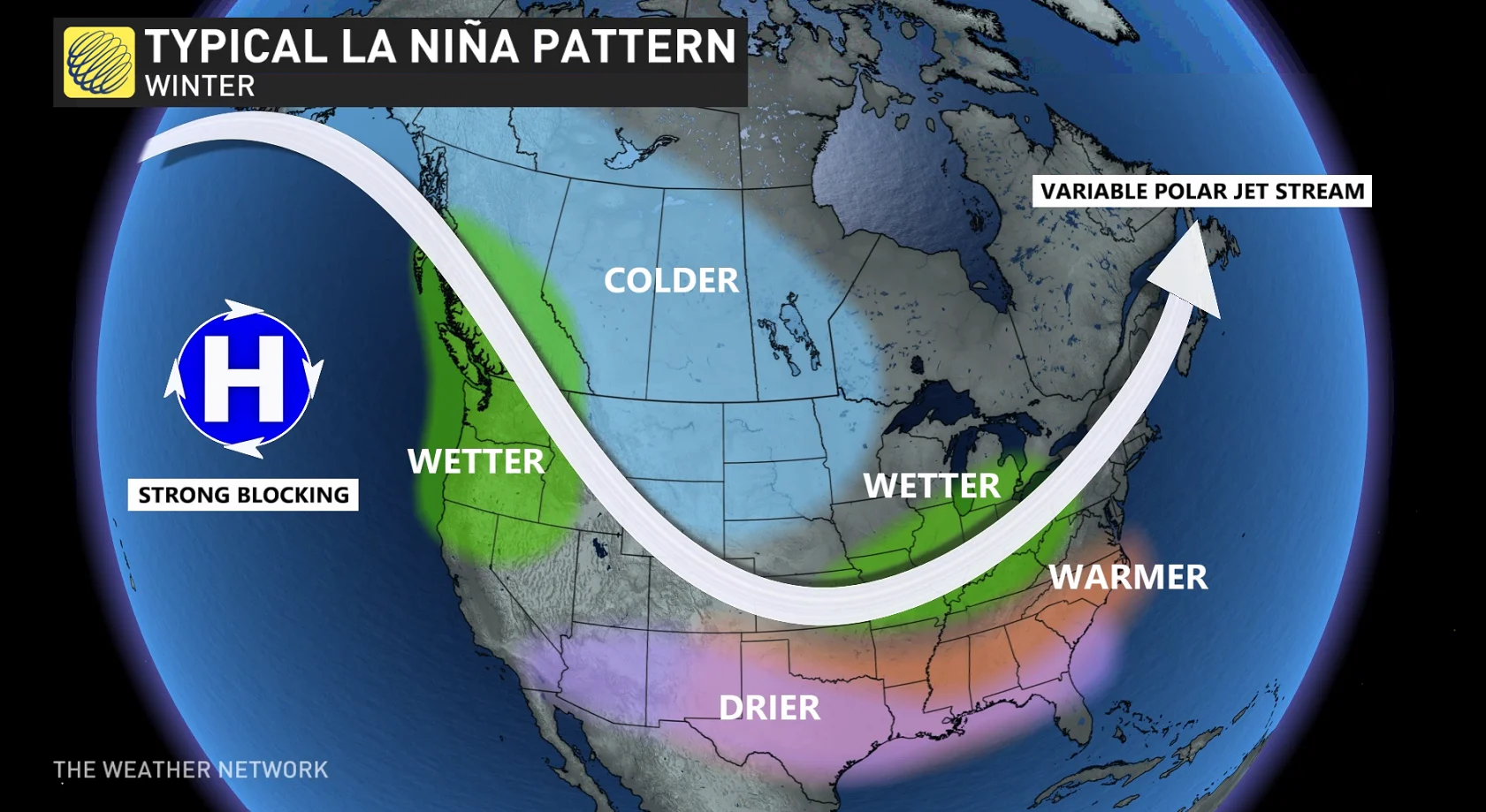
La Niña watch issued for this winter as key factors signal change
Forecasters are on the lookout for a return to La Niña conditions by this winter, potentially affecting global weather patterns
A La Niña watch is now in effect as signs begin to point toward a return to the pattern heading into this winter.
Forecasters around the world keep tabs on the El Niño-Southern Oscillation for clues about conditions in the seasons ahead.
La Niña conditions can have a significant effect on global weather patterns, including temperature and precipitation trends here in Canada.
DON'T MISS: What happens when El Niño and La Niña disappear?
Water temperatures likely to dip in the coming months
A La Niña occurs when water temperatures are at least 0.5°C cooler than normal for several consecutive months, while an El Niño unfolds during an equivalent episode of warmer-than-normal water temperatures.

Sea surface temperatures in a key region of the eastern equatorial Pacific Ocean are currently hovering around normal, a sign that we’re in ENSO-Neutral conditions with neither El Niño nor La Niña present.
The latest update from the U.S. Climate Prediction Center (CPC) called for ENSO-Neutral conditions to continue through the remainder of summer. By this fall, though, water temperatures are expected to cool just enough to qualify as a relatively weak and short-lived La Niña event.

“The forecast team narrowly favors La Niña thresholds being reached” between September and January, the CPC said in its forecast issued on Thursday. We’ll likely see a return to ENSO-Neutral conditions by the latter half of this winter.
Our last bout of La Niña conditions arrived in 'stealth mode' in December 2024 and stuck around through March 2025.
La Niña affects precipitation, temperature trends
What kind of effects could La Niña have on winter in Canada?

A typical pattern favours below-seasonal temperatures in Western Canada while an active storm track builds over the Great Lakes and Eastern Canada.
It’s important to remember, though, that La Niña is only one part of the puzzle. Lots of factors can influence how winter plays out across Canada.
Every event is different, as well. A weak La Niña like the one predicted this season could have a muted effect on global weather patterns, which may lead to less noticeable changes in our day-to-day conditions.
